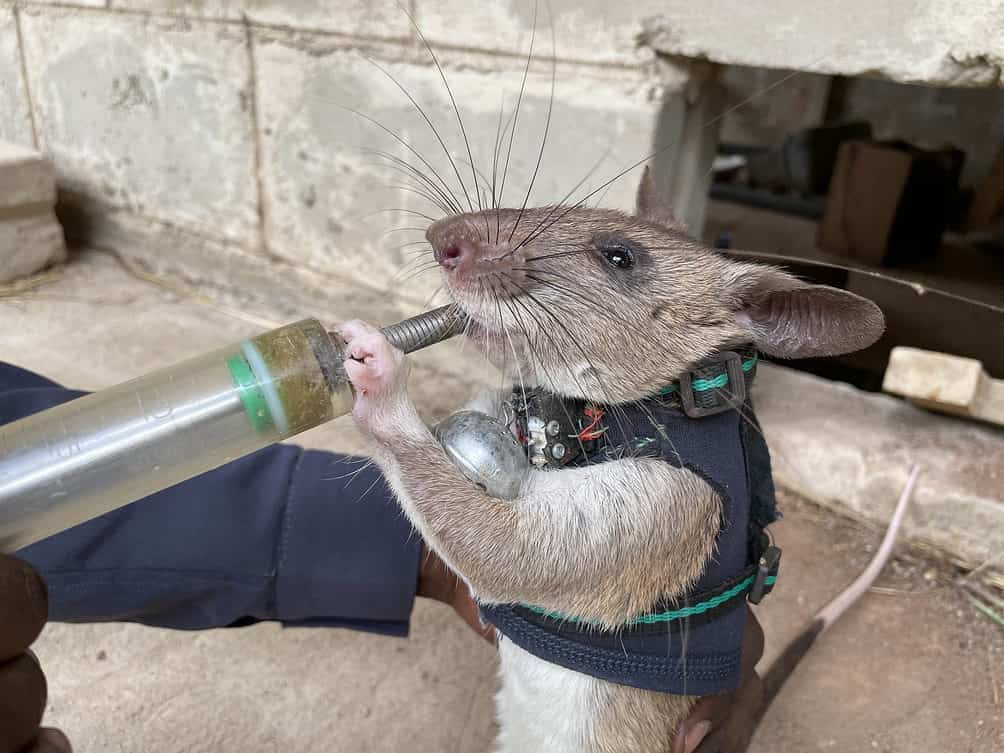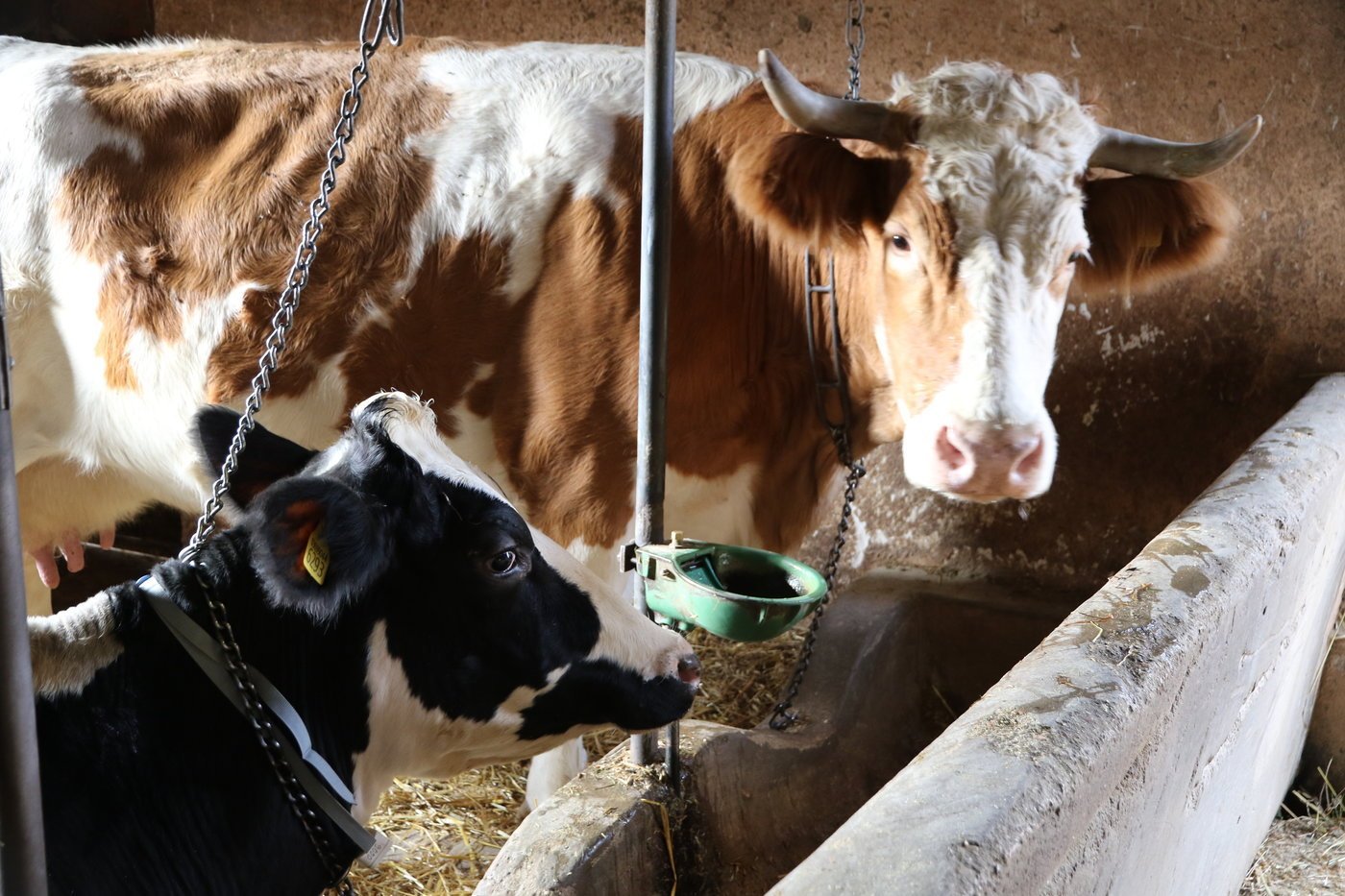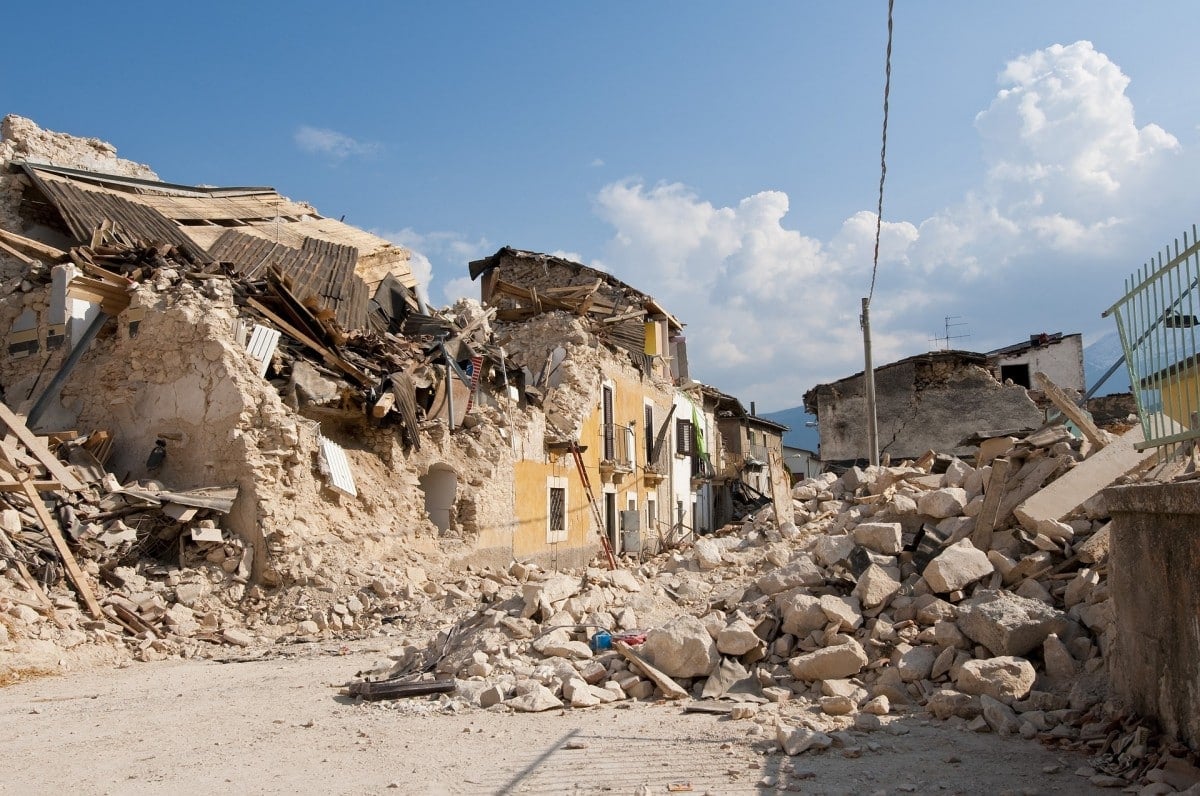
Bram van Kasteren was deeply moved when he heard about the earthquake in Turkey and Syria. Not only because the TU-Eindhoven (TU-E) student spent the past year researching rats that can save human lives in an earthquake. Also because he spoke to a Turkish friend about the impact of such an earthquake. “I find it really bizarre that this is happening now and I hope that we can save more people in the future with the help of the rats,” says van Kasteren.
Graduation project
He did a graduation project in which rats are trained to locate people who have been buried under rubble in an earthquake. In this way he continues the work of Sander Verdiesen. This TU-E alumni has built a kind of backpack that the rats can put on. This allows the rats to stay in contact with the rescuers until they smell a human. Then the rat presses a button and the search team knows where someone is under the rubble.
“This first prototype contains a container full of equipment made with a 3D printer. This container is attached to a kind of harness of wetsuit material. It contains a camera, an antenna, an SD card for storing data and a small microphone,” says van Kasteren. This prototype is then attached to the rats’ backs.”
Rats
The rats are trained by Apopo, a Belgian organization that trains animals to make the world a safer place. This organization is already successful in training rats to detect tuberculosis and also uses rats to find landmines. They approached a Turkish aid organization to deploy rats in an earthquake disaster area, and this is how the collaboration with TU/E was born.
Rats have many advantages over, for example, dogs. They are smaller and can therefore reach many more areas. “Another advantage of using rats is the fact that rats aren’t loyal to a single person. A dog listens to a trainer, who must therefore always be there. Rats can be used much more widely,” explains van Kasteren. Smelling people and training to press a button when the rat smells a human has already been successful.

Finding de rats again
Van Kasteren, therefore, focused his research on the next step: “How do you find the rat again in a collapsed building?”. He tried different methods for this. “GPS is of course the first thing I thought of. But it soon became apparent that the signal is unreliable underground or in buildings,” says van Kasteren.
Then he looked at SLAM: Simultaneous Location And Mapping. “You basically make a kind of map based on camera images. But these cameras are big and cost too much energy,” says van Kasteren. Ultra-wideband, a technology known for its use in Apple Airtags, also proved inadequate for this application. As a result, van Kasteren ultimately opted for LoRa technology. “This has a long range and low energy consumption,” says van Kasteren.
Trilateration and Triangulation
Van Kasteren tries to map out the location of the rat as accurately as possible on the basis of trilateration and triangulation. His idea is to place five receivers around a disaster site that receive a signal from the backpack on the rat’s back. Trilateration uses the signal strength to locate the rat. “You can then draw a circle from all receivers that indicates how far away the signal is. The overlap between the different circles is then the location of the rat,” van Kasteren explains.
There are some problems with this method, however. Since the transmitters emit radio waves, they can bounce off debris and walls. It is also possible that the waves are amplified because pieces of metal unintentionally act as antennas. “If you only look at the signal strength, it could be that the signal bridges ten meters of air or a meter of concrete.
In addition, articles have been published that describe that pieces of metal in collapsed buildings suddenly amplify a certain frequency. For example, a drain pipe suddenly became a good antenna,” says van Kasteren.
Signal loss
That’s why he also looked at another way of determining position with LoRa technology: triangulation. With this technique, the main concern is the angle at which a certain signal arrives at a receiver. He placed two receivers right next to each other. Because the distance between the antennas remains the same, the angle at which the signal arrives can be calculated.
“There are still some problems with this technique. For example, signals can also bounce back, causing the angle to change. But even though the signals come in from all sides, a signal loses strength with every reverberation. As a result, the strongest signal indicates the most direct angle,” says van Kasteren.

Circuit board
Van Kasteren himself has built a number of receivers using a circuit board with an altimeter, a LoRa antenna, a microcontroller, and an SD card. “It is super informative to assemble such a system yourself. You have to draw such a printed circuit board manually, whereby a small error can result in a lot of extra work. Programming also takes quite a lot of time,” van Kasteren explains.
He also equipped the system with WiFi and Bluetooth. “In order for the system to actually be applicable in a disaster area, it must be easy to use. That’s why I wanted to set it up in such a way that a rescue team can make contact with the system on a mobile phone,” says van Kasteren.
From hockey pitch to disaster zone
The system was now ready for testing. A hockey field in Eindhoven was used as a disaster zone. Van Kasteren played the rat. With a transmitter in hand, he walked diagonally across the hockey field. Sometimes the system was very reliable, but at certain points, there was a forty-meter deviation. “That probably has to do with reflection from the lampposts. This shows how difficult it is to make such a system work in an unknown disaster area,” says van Kasteren.
The project is still in the research stage. The victims of the earthquake in Turkey will not be helped yet. Nevertheless, Van Kasteren is very confident that his research can be used in an earthquake. He himself continues to work on technology that offers assistance in earthquakes. Van Kasteren says: “In two weeks I’m going to do an internship at a company in Tokyo that deploys drones in disaster areas. I hope to learn a lot there so that I can continue with this project after my studies.”







